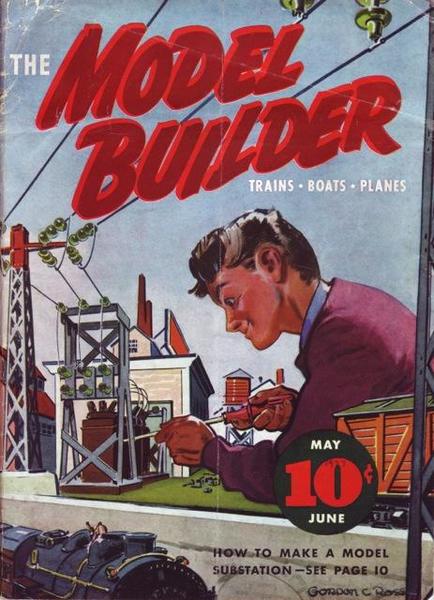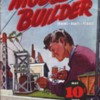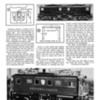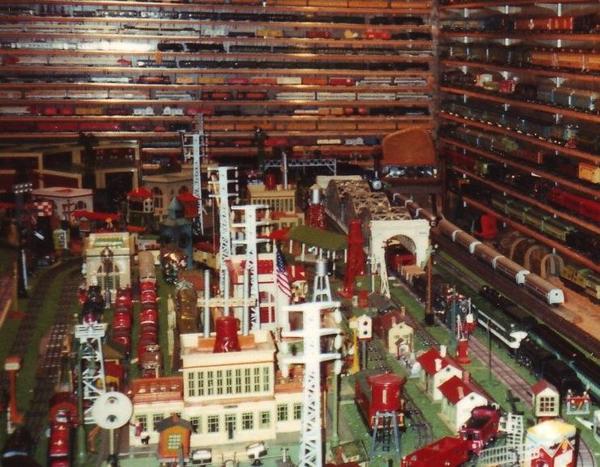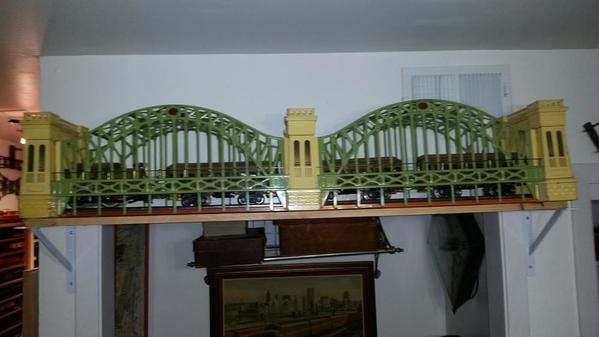I setup my #300 Hellgate Bridge. Thank you Thesepaperwings! So, never one to leave well enough alone, I lighted it with red and green LEDs. What do you think?
Replies sorted oldest to newest
George S,
Way cool lighting effect especially for a Christmas layout, thanks for the idea of the mix of Red & Green Lighting, I like it a lot. Might try to set my 305 HG lighting up in the same manner for next years Christmas layout.
PCRR/Dave
Very Nice.
Not so sure I like the red and green lighting. I'd like to see it with regular white light, to be honest. The red and green looks to incongruous to me and overpowering maybe?, taking away from the majesty of the piece. It makes the bridge look small, in the photos anyway, which it is not, I have gathered. Just my two cents. Keep the change.
It's actually good to get a contrary opinion on a thread like this. I like it when people take a position, because it sharpens the conversation and everyone learns something.
I did use white and clear lens LEDs before I put the red and green in. I liked the clear, but it wasn't as majestic in my opinion. I think with clear, you would need some cellophane window shades to create more 'glow'. I am using ceramic house lights that are 120V. I had a problem getting two different bulbs to fit, because they were a little too wide and stayed up in the top of the tower reducing the light output.
One reason it looks small is because I am running about the biggest train that will fit through it; two 400e engines and a string of 200 series freights. This is the #300, which is a little smaller than the #305 too. I could try running the O gauge tinplate through it, but I don't have that set up. Then it would look massive.
George
Wow! Looks outstanding! Nice work.
George:
I think it looks very nice, too, but in reading what William posted I can see his point as I agree with him that it could get a little overwhelming after a while. I’m sure it would be very appropriate and a great touch for a temporary Holiday layout like Dave plans to do or for temporarily installing on a permanent layout over the Christmas Holidays, but not sure I could live with it all year. You certainly have given me an idea for my original #300 Hellgate I set up under the Christmas tree every year!
Now in response to William’s request to see what one looks like with regular lighting, attached are a couple of photos of my Lionel #305 repro which came with lighted piers. In addition I have added clear LED’s in the supporting lower piers plus a blinking red LED on the top center of the superstructure. Both photos were taken at night with the room lights off using a flash in the first photo and no flash in the second photo. The two other red lights shown in the photos are switch lantern lights.
Bill
Attachments
Kind of whimsical with the colorful lighting - if that's what you were after, it's great.
Curious - any idea why Lionel, and then MTH basically playing copy cat, decided to make the majestic Hellgate Bridge into such a ridicoulously blunted expression? Yes, a scale model wouldn't be feasible, but something with a slightly wider span would make for more graceful flowing lines.
PJB posted:Kind of whimsical with the colorful lighting - if that's what you were after, it's great.
Curious - any idea why Lionel, and then MTH basically playing copy cat, decided to make the majestic Hellgate Bridge into such a ridicoulously blunted expression? Yes, a scale model wouldn't be feasible, but something with a slightly wider span would make for more graceful flowing lines.
That’s a good question which probably boils down to what kind of look they were trying to achieve plus I’m sure cost and market price played a factor.
Rather than redesigning it to more prototypical-looking dimensions I think Lionel was trying to appeal to those hobbyists, both standard gauge and O gauge, who had always wanted an original #300 but couldn’t find a used one in good enough condition to justify paying the high price in the secondary market.
I’m not at all familiar with the MTH version but the original Lionel #300 was designed for two sections of Lionel standard gauge 4-tie straight track to snap into the base. When Lionel came out with the repro in 1999 they made it wider to accommodate two parallel lines of O gauge track so why couldn’t they make it longer, too?
Perhaps the next logical step in length would have been to hold a third full section of Standard gauge track which would extend it by another 15 inches. Re cost considerations, that would be a 50% increase in the length of the span and add considerably to its production cost and weight making it even more difficult and expensive to ship (i.e. the shipping carton for my #305 repro photographed above measures 35” x 17” x 17” and weighs about 27 pounds with the bridge in it). Plus it would take up a lot of shelf space and storage space for dealers.
Maybe Lionel thought it was already expensive and large enough with a 30-inch span and any further increase in price would reduce its marketability so they decided to just recreate the nostalgic look of the original pre-war model!
That’s my 2 cents worth,
Bill
Bill,
Bill your elevated HG 305 with your lighting and the cools railings around the walk way, is just fantastic, did you use welding rod to make the railings, what a great effect for a layout.
PCRR/Dave
Railpictures.net has a nice photo of the real bridge posted. Really nice.
Pine Creek Railroad posted:Bill,
Bill your elevated HG 305 with your lighting and the cools railings around the walk way, is just fantastic, did you use welding rod to make the railings, what a great effect for a layout.
PCRR/Dave
Hi Dave,
Glad you like it. The railings are 10 gauge copper wire. How does that compare to welding rod size?
Bill
WTFTRAINS - thanks for the very enlightening response! I wasn't aware of the history in terms of the track length factoring into bridge expanse considerations way back when.
In terms of cost - while you make a very logical point, in the 4+ years I've been in the hobby, I haven't seen any demonstrable sign of Lionel having any cost consciousness. With a statistically higher price point across the board than its main competitor for similar items, $209 box cars and the prices for locomotive reissues (from existing tooling) being bumped 30-50% it's hard to imagine anyway.
Have toyed with the idea of buying one and trying to create a better expanse. Maybe if I make it to retirement age ...
Thanks again,
Peter
WftTrains posted:In addition I have added clear LED’s in the supporting lower piers plus a blinking red LED on the top center of the superstructure. Both photos were taken at night with the room lights off using a flash in the first photo and no flash in the second photo. The two other red lights shown in the photos are switch lantern lights.
Bill
The lower piers are very impressive. I actually like that lighting effect better than the cellophane covered portals on the #305 itself. I like the shadows and depth of lighting.
On mine, It would be interesting if I could find a way to switch the lighting color with a switch instead of changing bulbs. I didn't consider that when I installed the lights. I'll give it some thought.
George
WftTrains posted:I’m not at all familiar with the MTH version but the original Lionel #300 was designed for two sections of Lionel standard gauge 4-tie straight track to snap into the base. When Lionel came out with the repro in 1999 they made it wider to accommodate two parallel lines of O gauge track so why couldn’t they make it longer, too?
I would refrain from calling the modern Lionel 305 Hellgate bridge as a reproduction. Yes it was modeled after the original Lionel 300 Hellgate bridge, but was modified from the original design by altering the bridge opening width, adding lights, etc. Thus this updated version of the Hellgate received a new number, #305.
The MTH version of the #300 Hellgate bridge produced in 1987, and later in 2007, are true reproductions of the original. They are based off the same dimensions, colors, construction and features (limitations) of the original. The #300 bridges made by T-Reproductions, also in 1987, would fall in this same category.
I feel there was never a thought of making it longer. Not just on the production side, but most consumers would not have room for an enlarged Hellgate.
Case in point: American Flyer produced a wooden bridge in the prewar period. The bridge was available in two lengths: a short version 27" long and a long version at 42" in length. From what bridges have survived, there are far more short bridges than the long ones; almost a 10:1 ratio, maybe more. The fact that there are more short ones is they were more produced, which would mean more were sold. Even in the 1930's when people had more room for larger SG layouts, many didn't have the room for the long American Flyer bridge.
Sorry, this is the only picture I could find of both bridges in one photo. The short version is in the front, the long version is in the rear. The one in the middle is a basket case.
ARNO
Attachments
Actually, you can make a Hellgate bridge as long as you want. This is done by taking 2 bridges and removing the pier from one. Then you take the open end and attach to the whole bridge. Lionel originally made them this way.
ARNO - That's an interesting point. To better apply that "pre-war" assumed statistic (i.e. surving examples are a direct correlation to how many of each were produced and sold) in terms of how a slightly more realistic looking example would fare today: it would be helpful to know what percentage of prewar hobbyists had layouts of the size and caliber of those today. My guess is that far more O scale hobbyists today have enormous layouts than during the depression. And it seems realism is more the "norm" today too. But this is just my guess. It would be good to know the reality.
I like the lighted bridges. look great.
moderneraSG posted:WftTrains posted:I’m not at all familiar with the MTH version but the original Lionel #300 was designed for two sections of Lionel standard gauge 4-tie straight track to snap into the base. When Lionel came out with the repro in 1999 they made it wider to accommodate two parallel lines of O gauge track so why couldn’t they make it longer, too?I would refrain from calling the modern Lionel 305 Hellgate bridge as a reproduction. Yes it was modeled after the original Lionel 300 Hellgate bridge, but was modified from the original design by altering the bridge opening width, adding lights, etc. Thus this updated version of the Hellgate received a new number, #305.
I feel there was never a thought of making it longer. Not just on the production side, but most consumers would not have room for an enlarged Hellgate.
ARNO
Arno, You’re right I shouldn’t be calling the 305 a reproduction as it was made wider and has built-in illumination which the original did not have. My mistake. I also thought about the lack of layout space being a reason for not making it longer but didn’t include it.
Thanks,
Bill
George S posted:WftTrains posted:In addition I have added clear LED’s in the supporting lower piers plus a blinking red LED on the top center of the superstructure. Both photos were taken at night with the room lights off using a flash in the first photo and no flash in the second photo. The two other red lights shown in the photos are switch lantern lights.
Bill
The lower piers are very impressive. I actually like that lighting effect better than the cellophane covered portals on the #305 itself. I like the shadows and depth of lighting.
On mine, It would be interesting if I could find a way to switch the lighting color with a switch instead of changing bulbs. I didn't consider that when I installed the lights. I'll give it some thought.
George
George:
Why not add loose LED’s of different colors and have each one wired to a separate toggle switch? Then you could turn on and off which ever color or colors you wanted. You could just tape them to the inside of the pier. That’s how the LED’s are installed in my lower piers.
Bill
F&G RY posted:Actually, you can make a Hellgate bridge as long as you want. This is done by taking 2 bridges and removing the pier from one. Then you take the open end and attach to the whole bridge. Lionel originally made them this way.
Jim:
So if you make 2 bridges into one it would have 2 superstructures and 3 piers with one of those piers in the middle? I never heard that Lionel originally made them like that. Do you have a reference or a photo of one?
Bill
PJB posted:ARNO - That's an interesting point. To better apply that "pre-war" assumed statistic (i.e. surving examples are a direct correlation to how many of each were produced and sold) in terms of how a slightly more realistic looking example would fare today: it would be helpful to know what percentage of prewar hobbyists had layouts of the size and caliber of those today. My guess is that far more O scale hobbyists today have enormous layouts than during the depression. And it seems realism is more the "norm" today too. But this is just my guess. It would be good to know the reality.
I think a lot of the prewar layouts were done by/for the kids of the day. Remember, they were toys after all. Temporary holiday layouts in the parlor or layouts on the attic floor were more the norm in prewar times. There were some hobbyists who used SG for their layouts. Many tried to alter the tinplate trains to achieve a more realistic layout, but it was still tinplate at heart. It wasn't until Lionel introduced their more scale O gauge line around 1934 that prewar modellers were able to purchase more realistic looking locomotives and cars. The H0 boom around the same period was geared towards the same outcome, trains that look and operate more in a more realistic manor.
That whole thing never hit Standard Gauge in the prewar times although some small companies tried; companies like General trains, Lobaugh, Model Builders Equipment, Shaw Models and Randall Trains to name a few.
There were modellers in the prewar period that strove for more scale looking Standard Gauge equipment. A fellow by the name of Warren Reinhard was one of these people. He was responsible for many of the articles and photos that appeared in the early Model Builder magazines.
Although not credited, his work appeared in many of their publications. One of his projects was converting a Lionel #10 locomotive into a more realistic looking PRR 0-1 Electric loco.
Another fellow who basically was living in his own world building scale trains in Standard Gauge was Guy Vaughan. He made highly detailed and accurate brass models on his kitchen table. He didn't realize other people liked doing this until late in his life when he discovered the New York Society of Model Engineers. He then had an avenue to share his beautiful models.
If you want to see more about some of these folks, I encourage you to look through some of the old magazines of that period: Model Railroader (started in 1934), Model Craftsman, The Model Maker, Miniature Railroading, Popular Mechanics and the afore mentioned Model Builder. These magazines have a ton of early model railroad layouts in them and are neat to read about today.
Maybe I'll start a thread for old time layouts from magazines....
ARNO
Attachments
WftTrains posted:George:
Why not add loose LED’s of different colors and have each one wired to a separate toggle switch? Then you could turn on and off which ever color or colors you wanted. You could just tape them to the inside of the pier. That’s how the LED’s are installed in my lower piers.
Bill
Bill,
I think that would work if I didn't use the nightlight size bulbs. The bulbs barely fit as is. I can just replace them as needed by removing the pier top. I just need to be a little careful when putting the top back on, because the tinplate 'springs' apart and I need to hold it together as I put the top back on and watch not to scratch the paint.
George
WftTrains posted:So if you make 2 bridges into one it would have 2 superstructures and 3 piers with one of those piers in the middle? I never heard that Lionel originally made them like that. Do you have a reference or a photo of one?Bill
Bill, I have seen these bridges extended in a few different ways. One method is how you described it. I am looking for a picture of one, but I have not located one as of yet. The other way I have seen the bridge elongated is by eliminating all the inner piers and just have the outer piers. I have an old photo from a layout I visited back in the early 1990's. He had a 3-span Hellgate that he had custom made by T-Reproductions. Here is the only picture I can find of it right now, I'll keep looking to see if I have a better picture of the bridge itself.
I seem to recall an article, maybe in the Train Collectors Quarterly, about how to convert these into multiple span bridges. But I can not remember where or when I saw it.
ARNO
Attachments
I kinda misspoke. I meant Lionel made them so that 2 Hellgate bridges could be combined to form a 3 pier Hellgate bridge. They could be converted back to form 2 Hellgate bridges without damage.
Down the road I would like a 3 span 4 pier Hellgate.
I do not think the length of a straight track was any constraint to the length of the bridge. Logical yes. Deciding factor,no. Two lengths was big enough probably had more to do with it.
George S posted:WftTrains posted:George:
Why not add loose LED’s of different colors and have each one wired to a separate toggle switch? Then you could turn on and off which ever color or colors you wanted. You could just tape them to the inside of the pier. That’s how the LED’s are installed in my lower piers.
Bill
Bill,
I think that would work if I didn't use the nightlight size bulbs. The bulbs barely fit as is. I can just replace them as needed by removing the pier top. I just need to be a little careful when putting the top back on, because the tinplate 'springs' apart and I need to hold it together as I put the top back on and watch not to scratch the paint.
George
George:
The LED’s are small and if you take those large bulbs out you could easily fit 3 or 4 different color LED’s in each pier. With each LED wired to a separate toggle switch you could change the lighting without disassembling the bridge. The wire leads for the LED’s are very thin and easy to hide. Like I posted earlier, based on your idea I plan to add red and green LED’s to my original #300 for my next Christmas layout and will just tape them into place inside the piers.
Bill
WftTrains posted:George:The LED’s are small and if you take those large bulbs out you could easily fit 3 or 4 different color LED’s in each pier. With each LED wired to a separate toggle switch you could change the lighting without disassembling the bridge. The wire leads for the LED’s are very thin and easy to hide. Like I posted earlier, based on your idea I plan to add red and green LED’s to my original #300 for my next Christmas layout and will just tape them into place inside the piers.
Bill
Yes, that is an option. I may do that down the road. Just need to pick my projects...
Got a picture of a double span that my buddy owns. Obviously a 3-pier version.
This bridge is supposed to be the bridge from the TC Quarterly article from July 2000 (vol.46, no.3). In the article, it states that the center piers fabrication is unquestionably factory made.
Neat piece of history.
ARNO
Attachments
Very cool!
Worked with Phil in trying in getting more info on the bridge but unfortunately at the time the question arose Frank Pettit had passed away and no one came forward with an answer.
Ron M
moderneraSG posted:
Hi Arno:
Thanks much for posting that 1980 TCAQ article as a reference. I found my issue and just read it. It indicates that the special center towers were factory made and it also implies that this double bridge may have been a one-of-a-kind. I see from Ron's latest posting that no new info has been received. That’s too bad. I don’t have a pre-war service manual so does anyone know if those special center towers were ever offered as a part available for separate purchase?
But it is now obvious from that article that a user who owns two bridges would have to do some major modifications to combine two bridges into one longer bridge. Assuming those special center piers are not available I pulled my #300 out of storage and it looks like you could drill two holes (ugh!) in the outside end of one end tower to attach the bolster from the second bridge. Obviously you would lose that internal walkway. But regardless the most significant modification would be shortening the base of one bridge to fit which would require cutting that metal base by 3”, obviously a non-reversible modification. Shortening of the base also changes the track spacing which would require cutting one of the straight sections to fit.
Speaking of the track, I have a question. I’ve been using the straight sections with 4 ties per section in my bridge because the tie slots in the base are obviously sized for sections with 4-ties. Also the ties on the 4-section straights are narrower (when viewed from the side) than the ties on the 3-ties track which won’t fit into the slots in the base of the bridge. Was Lionel using 4 ties per section straight track before they came out with the bridge? If not why didn’t they size the slots for the 3-tie track which seem to be the more common straight track?
And finally after getting out my #300, I noticed that the walkway appeared noticeably shorter than the walkway on my “newer” #305 so I decided to measure both of them. As it turns out, not only is the #305 wider but it is 1½” longer than the #300!
Bill
F&G RY posted:I kinda misspoke. I meant Lionel made them so that 2 Hellgate bridges could be combined to form a 3 pier Hellgate bridge. They could be converted back to form 2 Hellgate bridges without damage.
Down the road I would like a 3 span 4 pier Hellgate.
I do not think the length of a straight track was any constraint to the length of the bridge. Logical yes. Deciding factor,no. Two lengths was big enough probably had more to do with it.
Jim:
After now reading the article Arno posted above, while it may be possible to combine 2 Hellgate bridges to form a 3-pier Hellgate, unless I'm missing something, I don’t see how they could be converted back to form 2 Hellgate bridges "without damage”. In order to combine 2 bridges into a 3-pier bridge, that article says that the base of one bridge was shortened to fit. This is because the base extends the entire length of the bridge including the piers. Therefore when you remove one pier then one of the two bases will be too long. You would have to cut 3” off one of those metal bases, obviously a modification which would damage that original base.
Regarding the track sections factoring into the length decision, there are slots in the base to firmly secure the track but Lionel didn’t make half-sections or any other partial length standard gauge straight track sections.
Bill
WftTrains posted:F&G RY posted:I kinda misspoke. I meant Lionel made them so that 2 Hellgate bridges could be combined to form a 3 pier Hellgate bridge. They could be converted back to form 2 Hellgate bridges without damage.
Down the road I would like a 3 span 4 pier Hellgate.
I do not think the length of a straight track was any constraint to the length of the bridge. Logical yes. Deciding factor,no. Two lengths was big enough probably had more to do with it.
Jim:
After now reading the article Arno posted above, while it may be possible to combine 2 Hellgate bridges to form a 3-pier Hellgate, unless I'm missing something, I don’t see how they could be converted back to form 2 Hellgate bridges "without damage”. In order to combine 2 bridges into a 3-pier bridge, that article says that the base of one bridge was shortened to fit. This is because the base extends the entire length of the bridge including the piers. Therefore when you remove one pier then one of the two bases will be too long. You would have to cut 3” off one of those metal bases, obviously a modification which would damage that original base.
Regarding the track sections factoring into the length decision, there are slots in the base to firmly secure the track but Lionel didn’t make half-sections or any other partial length standard gauge straight track sections.
Bill
The article also said the middle pier was a special, modified pier with no end portals. Maybe two of the original piers were disassembled and the inner portions were recombined. This seems like a kit bash, not an intended Lionel configuration.
George
I am sorry. I had read that in a couple of different places and thought it to be true. After checking my bridge modifications would have to be made. Holes would have to be drilled to hold the bracket for the span. It looks like one can get around cutting the base by bending the front lip of the pier and overlapping the base.
I would not do this to my bridge. However,if I had an extra pier I think I would.
For a company like MTH or T-Reproductions to make a special pier for the middle section it would be fairly simple. A new die with holes for the walkway on both sides and no lip on the bottom. I think the total market might be about 10. An extra pier from parts may be available.
As far as the track length being a deciding factor for original production bridge length they would just change the way the base is punched. Right now they are made for 4 tie 14 1/2" track. Three single ties on each end and double ties in the middle for joining tracks. If they wanted the bridge to be 7 inches longer they could have molded 2 double ties in the base and track sticking out 7 1/4" on each end. No need for half tracks that did not exist at the time.
moderneraSG posted:
I do not understand why the bridge is made with 2 different color bases. If it was factory made one would think the bases would match.
In the photo of Arnos friends bridge I can not tell if the bases are 2 different colors. If they are then it is most likely the bridge from the 1970 article.








